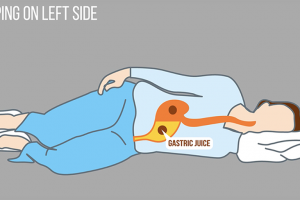Causes, Symptoms, and Prevention Strategies
Sciatica pain is a common and often debilitating condition that affects millions of people worldwide. It is characterized by pain radiating along the path of the sciatic nerve, which runs from the lower back through the hips and down each leg. Understanding the causes, symptoms, and prevention strategies for sciatica pain is crucial for managing and alleviating this condition.
Causes of Sciatica Pain:
- Herniated Discs: One of the primary causes of sciatica is a herniated or slipped disc. When the gel-like substance within a spinal disc leaks out and presses on the sciatic nerve, it can result in pain and discomfort.
- Spinal Stenosis: This condition occurs when the spinal canal narrows, putting pressure on the nerves, including the sciatic nerve.
- Degenerative Disc Disease: As the discs between the vertebrae wear down with age, they can cause irritation and inflammation of the sciatic nerve.
- Spondylolisthesis: This occurs when one vertebra slips forward over the one below it, causing stress on the sciatic nerve.
- Piriformis Syndrome: The sciatic nerve can be irritated by the piriformis muscle in the buttocks, leading to sciatica symptoms.
Symptoms of Sciatica Pain:
- Sharp or shooting pain: Radiating from the lower back down the leg.
- Numbness or tingling: In the leg or foot.
- Muscle weakness: Difficulty moving or controlling the leg or foot.
- Burning sensation: Along the sciatic nerve pathway.
- Worsened pain with certain activities: Such as sitting or standing for prolonged periods.
Prevention Strategies for Sciatica Pain:
- Maintain Good Posture: Proper posture, especially while sitting, is crucial for preventing sciatica. Use ergonomic chairs and cushions to support the lower back.
- Regular Exercise: Engage in activities that strengthen the core muscles, as a strong core provides support to the spine. Include exercises like yoga and Pilates in your routine.
- Weight Management: Excess body weight can put additional stress on the spine and contribute to sciatica. Maintaining a healthy weight is essential for preventing and managing this condition.
- Lift Properly: When lifting heavy objects, bend at the knees and lift with your legs rather than your back to avoid putting undue pressure on the spine.
- Avoid Prolonged Sitting: Take breaks from sitting, and if you have a desk job, use a standing desk to reduce the risk of developing sciatica.
- Stay Active: Regular physical activity promotes blood circulation, flexibility, and overall spinal health. Include aerobic exercises and gentle stretching in your routine.
- Proper Footwear: Wear shoes with proper arch support to maintain proper alignment and reduce stress on the spine and sciatic nerve.
- Quit Smoking: Smoking can contribute to disc degeneration, increasing the risk of sciatica. Quitting smoking is a positive step toward overall spinal health.
Sciatica pain can significantly impact daily life, but adopting preventive measures can help reduce the risk of developing this condition. By maintaining a healthy lifestyle, practicing good posture, and incorporating regular exercise, individuals can take proactive steps to safeguard the health of their spine and prevent sciatica pain. If symptoms persist or worsen, it is essential to consult with a healthcare professional for personalized advice and treatment options.

























Add Comment